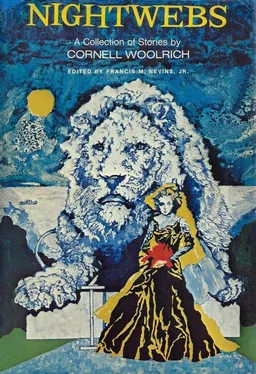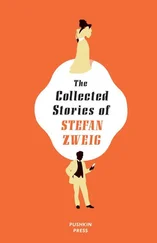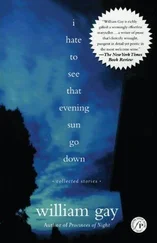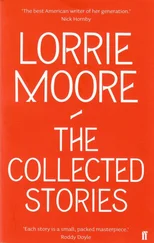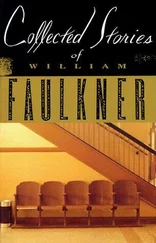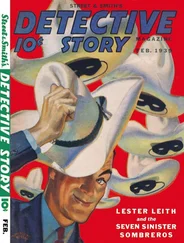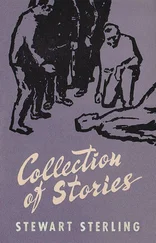The next 22 unnumbered pages are again narrated by Cleve. The police come to his and Janet’s apartment to arrest Janet for Adelaide’s murder. Cleve fights the detectives like a madman, swears that he, not she, killed Adelaide, and winds up in Bellevue.
Between this point and the final chapter, Cleve apparently went away and found some evidence that will enable his lawyer to get Janet’s murder conviction reversed. At the beginning of the last chapter he returns to the city and the lawyer tells him that Janet committed suicide in her cell that morning. Cleve returns to the apartment they shared and jumps out the window.
Interestingly enough, the last chapter of The Loser was published shortly after Woolrich’s death as an independent short story, “The Release,” in Robert L. Fish (ed), With Malice Toward All (Dutton, 1968). In the published version it is Cleve who has been in prison for murdering Adelaide. He returns to New York City after being pardoned and finds that Janet, unaware of the pardon, has killed herself that morning. The published version is more polished than either of the two variant manuscripts of the chapter.
C. I Was Waiting for You: Tales of Love and Despair.
This is a collection of short fiction which Woolrich was trying to put together in his last years. The typed title page lists the following as the proposed contents: (1) “I Was Waiting for You”; (2) “New York Blues”; (3) “Now I’ve Got You”; (4) “Two Lives”; (5) “Old Husband, Young Wife”; (6) “Don’t Let Men Hurt Her, Jimmy.” At the bottom of the title page is the following quotation:
But pass in silence the mute grave of two
Who lived and died believing love was true.
— Edna St. Vincent Millay
“I Was Waiting for You” is a long unfinished story, set during World War I and the Twenties, and dealing with a young man named Bruce Eadlin and a girl named Eva Brundage, who never meet but who in a kinder world would have met and loved. Separate sections relate the love and sexual problems of each. “New York Blues,” which was completed and purchased by Ellery Queen’s Mystery Magazine before Woolrich’s death and published in its December 1970 issue, is an unbearably moving mood piece in which a man who has killed his wife sits in a hotel room and waits for the police to pick him up. “Now I’ve Got You” was published in the May 1968 issue of EQMM as “For the Rest of Her Life.” “Two Lives” is a mere fragment, dealing with the abduction of baby Christopher Kemp the day before Pearl Harbor. Since a similar fate befell Starr Bartlett’s brother in Into Yesterday, I suspect that Woolrich incorporated his plan for this story into that unfinished novel. The final two titles, “Old Husband, Young Wife” and “Don’t Let Men Hurt Her, Jimmy,” appear to be no more than titles: Woolrich died before he could write the stories he intended to be called by those names.
D. Blues of a Lifetime: Personal Stories.
This unfinished autobiography found among Woolrich’s papers contains five sections in reasonably finished form. “The Poor Girl” deals with the author’s love affair in his late teens with a lower-middle-class girl named Vera, and with Vera’s unhappy end. In “Remington Portable NC69411” he recounts how he first began to write and comments extensively on what it means to be a writer. In “Even God Felt the Depression” he evokes the penniless year of 1933, tells how he wrote a novel he couldn’t sell and wound up throwing it in the garbage, and discusses sex, religion, poverty, his mother, and other subjects. “President Eisenhower’s Speech” provides much insight into Woolrich’s life with his mother during their last years together, and describes a disastrous fire in Woolrich’s apartment building in 1957. “The Maid Who Played the Races” is a quietly humorous little gem in which Woolrich tells how he was mistaken for a jockey one day in Seattle, and ended up having to sneak out of his hotel in the middle of the night.
It is rare indeed for the unfinished work of a mystery writer to be published after his death; but Woolrich was far more than a mystery writer, and the work he left behind is closer in quality to The Last Tycoon than it is to, say, The Winter Murder Case. We can but hope that some courageous and generous publisher will take a risk with these manuscripts, and give Woolrich’s many readers the chance to share them.
All-American Fiction
1. 11/37 I’m Dangerous Tonight.
NOTE: The scene in which Sarah Travis pushes her husband off the deck of the S.S. Gascony is the model for the famous balcony murder in CW 7 (The Bride Wore Black).
2. 3,4/38 Jane Brown’s Body. (F-SF 10/51.)
3. 5,6/38 Mamie ‘n’ Me. (CW 22.)
Argosy
1. 12/28/35 Hot Water. (EQMM 6/61.)
2. 1/25/36 The Crime on St. Catherine Street. (WI 13, as “One Night in Montreal”; EQMM 12/66, as “All It Takes Is Brains.”)
3. 5/16/36 Underworld Trail. (WI 13, as “One Night in Paris.”)
4. 8/22/36 You Pays Your Nickel. (WI 11, as “Subway”; The Third Mystery Companion, A. L. Furman, ed., 1945, as “The Phantom of the Subway”; Avon Detective Mysteries — 1, March 1947.)
5. 9/5/36 Gun for a Gringo.
6. 11/7/36 Public Toothache Number One.
7. 12/12/36 Holocaust.
8. 2/27/37 Speak to Me of Death. (EQMM 3/49; Fantasy Fiction, 5/50; SMM 3/66. Story was expanded into GH 1.)
9. 6/19/37 Your Own Funeral. (WI 9, as “Funeral”; EQMM 2/48, Ellery Queen’s 1962 Anthology, Ellery Queen’s Lethal Black Book, 1965, as “That’s Your Own Funeral.”)
10. 7/3/37 Clever, These Americans. (WI 15, as “Damned Clever, These Americans.”)
11. 7/31/37 Black Cargo.
12. 11/13/37 Oft in the Silly Night.
13. 12/18/37 Guns, Gentlemen. (CW 18, as “The Lamp of Memory”; The Fourth Mystery Companion, A. L. Furman, ed., 1946, as “Twice-Trod Path.”)
14. 1/29/38 Death in the Yoshiwara. (Manhunt 1/53, as “The Hunted.”)
15. 2/5/38 Wild Bill Hiccup. (WI 11; The Armchair Companion, A. L. Furman, ed., 1944; Avon Western Reader — 3/1947; SMM 11/63.)
16. 1/14/39 The Eye of Doom, Part 1. (Short Stories, 12/58, as “The Devil with the Sparkling Face.” Verbatim reprint.)
16. 1/21/39 The Eye of Doom, Part 2. (SMM 7/62, as “Two Against the Terror,” with ending slightly changed.)
16. 1/28/39 The Eye of Doom, Part 3.
16. 2/4/39 The Eye of Doom, Part 4.
NOTE: The first three installments of this serial, along with a completely new fourth part, were published in book form as CW 19 (The Doom Stone). The new Part 4 was reprinted as an independent short story, titled “Tokyo 1941,“in The Award Espionage Reader, Hans Stefan Santesson, ed., 1965.
17. 2/3/40 Senor Flatfoot. (WI 13, as “One Night in Zacamoras,” with several sections completely rewritten but no significant plot changes.)
18. 3/2/40 All at Once, No Alice. (WI 15;EQMM 11/51;Verdict, 7/53; Ellery Queen’s 1966 Mid-Year Anthology.)
19. 6/23/4 °Cinderella and the Mob. (EQMM 7/53; Keyhole, 4/60; Ellery Queen’s 1963 Mid-Year Anthology.)
20. 3/1/41 And So to Death. (WI 2, CW 14, RSMM 12/46, as “Nightmare.”)
Baffling Detective Mysteries
1. 3/43 The Death Rose. (EQMM 9/59, as “Dead Roses.”)
Bizarre
1. 1/66 Too Nice a Day to Die.
(This appearance almost simultaneous with the story’s publication in CW 21; CW 22.)
Black Book Detective
1. 7/36 One and a Half Murders. (CW 22.)
Читать дальше
